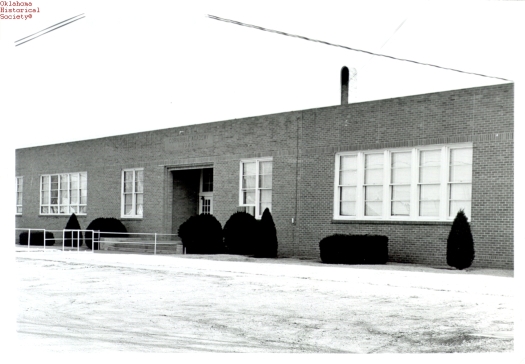
MENNONITES.
In nearly five centuries of their history Mennonites have pioneered many geographic frontiers. Originating in Switzerland, but named after Dutch theologian Menno Simons, Mennonites are the direct heirs of the sixteenth-century Anabaptist tradition. Their adherence to Christian pacifism, rejection of infant baptism, and refusal to accept the dictates of the state on religious matters resulted in persecution and forced migrations from one country to another. Some sought refuge in colonial America, beginning in 1683. Many Dutch and North German Mennonites migrated successively into Prussia, Russia and, after 1873, to the United States and Canada.
Diversity in social backgrounds, ethnicity, German dialect, dress, lifestyles, and worship forms resulted in the development of many separate Mennonite bodies. Mennonite groups represented in Oklahoma include the Mennonite Brethren Church (MB), General Conference of the Mennonite Church (GC), Mennonite Church (MC), Holdeman, or Church of God in Christ Mennonite Church, and Conservative Mennonite Conference. In 2002 the GC and MC churches united to form the Mennonite Church USA. Six Amish congregations are also part of the Anabaptist family in Oklahoma.
The Mennonite presence in Oklahoma began in 1880 with the establishment of mission work among the Arapaho at Darlington. Soon eleven GC mission stations, with more than one hundred workers, were established on Cheyenne and Arapaho lands. In 1896 Mennonite Brethren established a mission among the Comanche Indians near Indiahoma. Abraham J. and Magdalena Becker developed Post Oak Mission into arguably the most successful mission in western Oklahoma.
Mennonites were in the front ranks of those who came to Oklahoma during the period of the land runs. The first families homesteaded near Hennessey in 1889; the first Mennonite church was organized in 1891 near El Reno. By statehood there were at least forty-two churches scattered across western Oklahoma. The larger concentrations were at Korn (later Corn), Fairview, North Enid, and in the Meno-Ringwood-Goltry area. Within a decade after statehood new church communities developed in the Adair, Inola, Chouteau, and Collinsville areas. Later, urban churches were established in Enid, Tulsa, Edmond, and Oklahoma City. A Kleine Gemeinde congregation migrated from Mexico to near Boley in the 1970s. Their ancestors were Germans from Russia who had settled in Canada before moving to Mexico. Most Oklahoma Mennonites were Dutch-Germans from Russia who first had immigrated to Kansas in the 1870s. They brought the hardy Turkey Red seed wheat that they had successfully grown in Russia and Kansas, thereby helping Oklahoma become a major wheat-producing state.
Oklahoma Mennonites span a social spectrum, with varying degrees of assimilation into the larger society. The Holdemans, with four churches in the state, practice shunning, use lay ministers, and discourage higher education. Men wear abbreviated beards, and women wear black scarves or bonnets. Most work as farmers. Conservative Conference Mennonites dress plainly and women wear head veils, but unlike their Old Order Amish cousins, they use motor vehicles and electricity. The GC and MB churches, whose membership represents about 78 percent of the state's Mennonites have no dress requirements, use modern technology, support higher education, hire professional, salaried clergy, and participate in mainstream cultural activities. Members work in a wide array of professional and blue-collar jobs; fewer than half are farmers. All Oklahoma Mennonites, except American Indian congregations, used German as a common language until the late 1930s. Today only a few are fluent in either Low or High German; however, German is still the predominant language in the 135-member Kleine Gemeinde community.
Despite their different beliefs and practices, all Mennonite bodies stress the importance of a Christocentric biblicism, believers' baptism, discipleship, church as community, mutual aid, peacemaking, service ministries, and church as counterculture. All support the activities of the Mennonite Central Committee (MCC), an international relief and service agency. Each year Oklahoma congregations sponsor a Mennonite Relief Sale to raise funds for the MCC. They also support the Oklahoma Mennonite Disaster Service, an agency that assists victims of natural disasters.
The pacifist convictions of Oklahoma Mennonites were tested during the nation's wars, especially in World War I, with intense harassment and regular threats of violence. During World War II some men served in Civilian Public Service programs. However, others entered noncombatant service or regular military service.
In 2000 there were thirty-nine Mennonite churches in Oklahoma with a combined membership of 4,534 baptized adherents. The total Mennonite population was estimated at about 6,500. The membership in all Mennonite bodies of the United States was 232,000. The Mennonite Brethren, with thirteen congregations, represented 54 percent of the Mennonite membership in Oklahoma. The three largest Mennonite congregations, all MB, are located at Fairview, Collinsville, and Corn.






